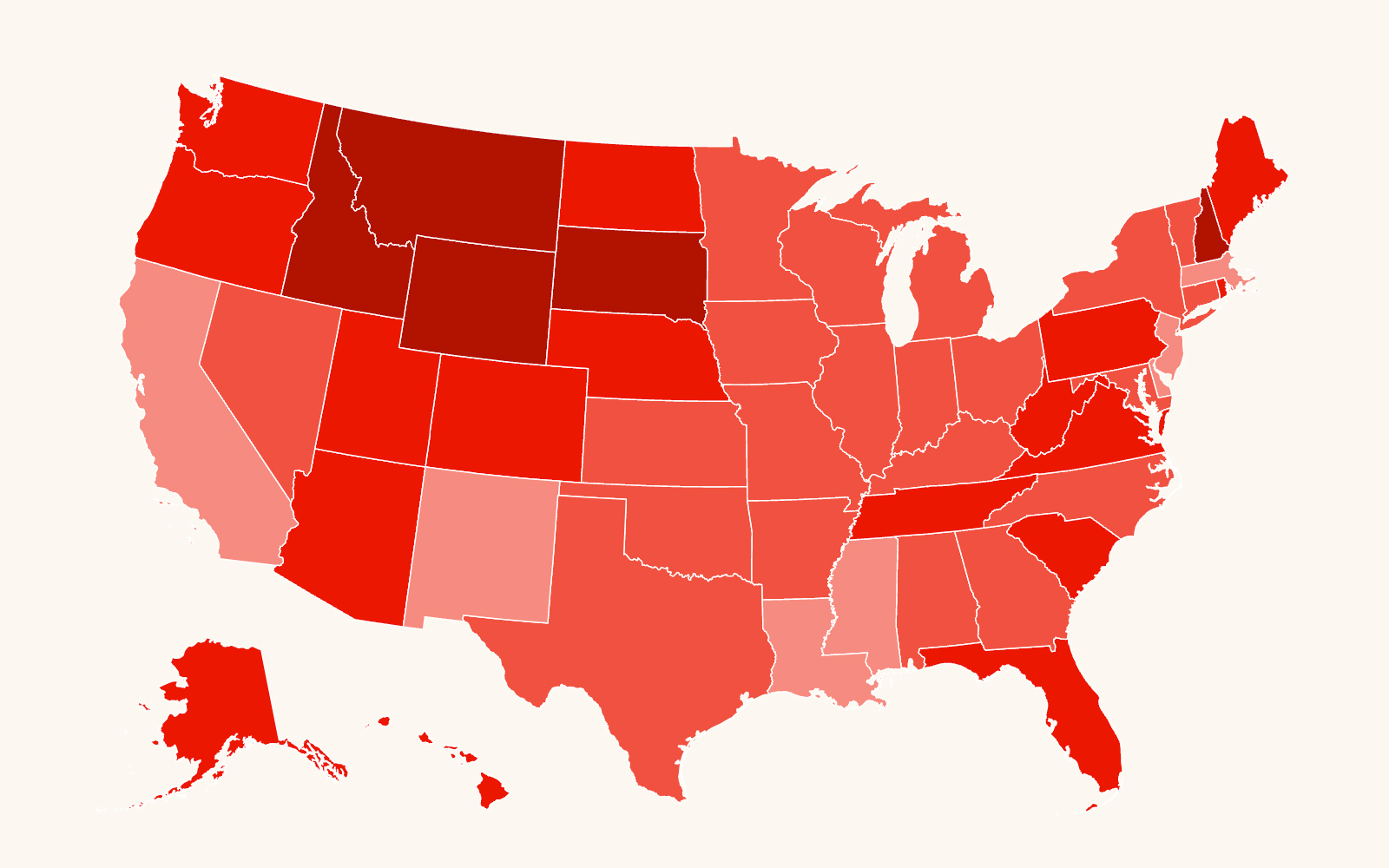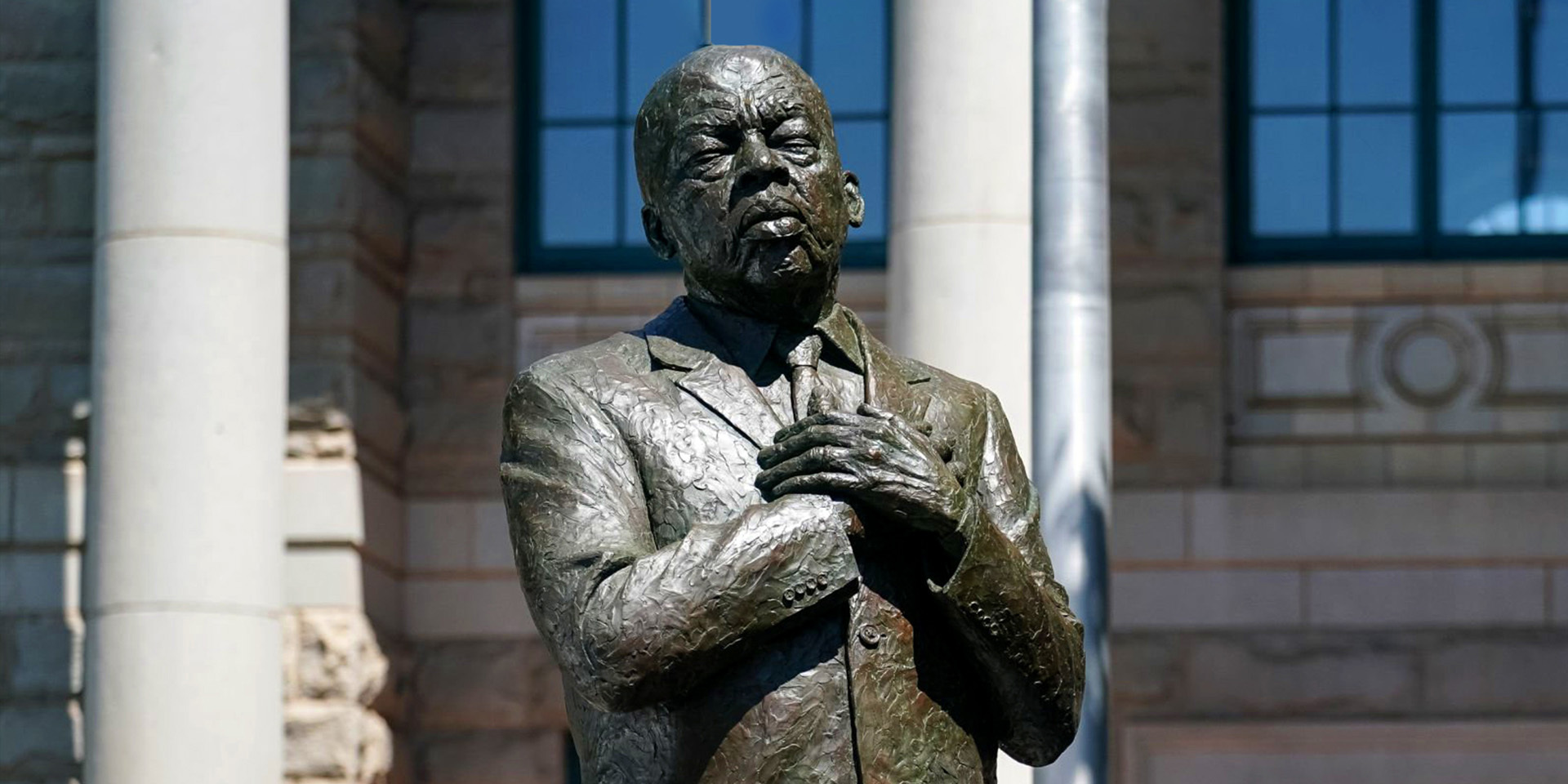When Donald Trump won a second term in the White House, he made very clear that he would be fighting to overturn what he saw as injustices done in the name of “woke.”
His executive orders, the fiat he has used to fuel a campaign of attacks on his perceived foes and their successes, are riddled with attempts to turn back the clock.
The orders have sought warm solace for racist and bigoted viewpoints in the renaming of U.S. military bases after soldiers who share surnames with Confederate military leaders and reintroducing Confederate statues previously removed from federal land. Both are seen as memorials to the “Lost Cause,” the belief that Southern heritage is bound up in glorifying segregationists, insurrectionists and racists for whom slavery is more palatable than emancipation and equity.
What those arguments lack, however, is the truth: The “Lost Cause” message is a fallacy that avoids much of the true heritage of the Deep South.
Rivka Maizlish, author of the most recent Whose Heritage? report that was released last week about the fight to remove “Lost Cause” memorials, said the administration’s efforts to whitewash history set back the fight to remove Confederate memorials from public spaces.

Toolkit, Guide, or How-To
Whose Heritage? report
The fourth installment of the SPLC’s Whose Heritage? report offers an evolving assessment of the
threats and harms that find continued life through Confederate symbols, “Lost Cause” narratives
and ideologies of white supremacy.
“I think — and that’s me being optimistic — we have our work cut out for us,” Maizlish said. “I have a bit in the end of the report that’s really important to me about how there is a Southern heritage that all Americans can be proud of. The racist false history of the ‘Lost Cause’ obscures that. It doesn’t just promote white supremacy and tell lies.”
The “Lost Cause” narrative also skips over many facts. For example, some 300,000 white Southerners and 50,000 Black Southerners fought on the Union side during the Civil War. Abolitionists and civil rights heroes from the South, both Black and white, are also part of the true story.
The fourth edition of the Whose Heritage? report lays out the current state of the fight against the memorials that flooded across the U.S. during the height of the Jim Crow era a century ago. More than 2,000 of these symbols are still in place. In addition to a map of all the current known “Lost Cause” memorials, the report includes a community action guide for those who want to remove memorials in their communities — even as the monuments are supported by the White House.
Although Trump has issued executive orders to have Confederate monuments that have been taken down returned, the orders are not laws and apply only to those monuments that have been removed from federal property.
“The vast majority of memorials that were taken down were on state or municipal land,” Maizlish said. “So, it can’t legally affect them, although I do worry that it will embolden people who already want to put memorials back up.”
Growing a movement
The Whose Heritage? report also touches on the resilience of people who have made efforts to remove “Lost Cause” memorials.
In Murray, Kentucky, for example, efforts to have a Confederate statue removed from in front of the courthouse were not successful. The memorial is still there. But so are the dozens of people who organized to have the statue removed. And now they have experience in organizing for a cause.
“What I have seen is the reemergence of student-led protest and, looking at the groups that helped us with the monument there, they happen to be the first groups of students [at Murray State University] who protested in support of those students who had their visas revoked,” said Sherman Neal II, who documented the effort to have the Calloway County Courthouse statue removed in his film, Ghosts of a Lost Cause.
Now based in Johns Creek, Georgia, Neal said he sees emerging signs of a backlash against the push to remove monuments.
“I know in Stone Mountain, Georgia, we had experienced one of the more robust Confederate Memorial Days that’s taken place in years,” Neal said. “These folks probably, and rightfully so, feel emboldened.”
Yet he also sees strength and hope in the resistance to those efforts.
“We’ve had victories,” Neal said. “Now in contrast to Stone Mountain, in Decatur, Georgia, they got rid of a Confederate statue and replaced it with one of [civil rights leader and late U.S. Rep.] John Lewis. They’ve had a full-circle victory.”
Distilling history from delusion
For Maizlish, one of the hardest parts of debunking the “Lost Cause” mythos is the fact that it is not based on reality, such as the argument that renaming U.S. military bases was the action of a “woke” mob.
“The bill that passed that called for renaming all nine military bases that were named after Confederates passed with like bipartisan support in 2020 and actually enough support to override Trump’s veto,” she said. “It was a democratic process that set up a bipartisan — or really, nonpartisan — naming commission to find new names for all those bases. This is just totally like a slap in the face to that democratic process as well.”
The movement to take down Confederate memorials did not just begin in 2020, and it didn’t begin in 2015. In 1923, before the Civil Rights Act and the Voting Rights Act even passed, they were able to block the construction of a big racist ‘mammy’ statue on the National Mall in Washington, D.C. So, this is a movement that has a long history with triumphs even in the darkest of times.”
Rivka Maizlish, author of the most recent Whose Heritage? report
Another argument — that the push to remove Confederate symbols is the result of the George Floyd protests in 2020 — is equally flawed.
“It goes back far, but I think that in terms of what we’ve accomplished, we started tearing those statues down around a decade or two ago,” said James Grossman, executive director of the American Historical Association. “We started rewriting the textbooks probably three or four decades ago. So, this work has taken place over a period of time. But most of what we’ve accomplished has probably been since the ’70s or ’80s in terms of the textbooks.”
Those successes, Grossman said, set the stage for the next battle, even as opponents control the levers of power.
“We’ve accomplished this,” Grossman said. “So that’s a resource. And 70 years ago, that resource didn’t exist.”
Grossman said the success in documenting and spreading facts has caused a shift in the way opponents now stage their assaults on history.
“It’s much less a knowledge problem than a political problem, which would explain the attacks on academia,” Grossman said. “It’s all part of the same effort. In 1953, we would have had a problem because defending academia wouldn’t have helped. But now we’re in a very different situation. The professional historical work in museums, historic sites, academia is very good. We’re defending good work.”
Maizlish also points to history as a defense of the current efforts.
“The movement to take down Confederate memorials did not just begin in 2020, and it didn’t begin in 2015,” she said. “In 1923, before the Civil Rights Act and the Voting Rights Act even passed, they were able to block the construction of a big racist ‘mammy’ statue on the National Mall in Washington, D.C. So, this is a movement that has a long history with triumphs even in the darkest of times.”
For now, though, Sherman Neal II said that while he is prepared to fight, he also knows to appreciate what has come before and changes that came from the struggle. He points to the leaders who have moved from being organizers and protesters to elected leaders, taking seats on city councils, county commissions, school boards and in state government.
But the most visceral change for him comes from seeing the 12-foot-tall statue of Lewis in front of the DeKalb County Courthouse in Decatur, Georgia, which in August replaced a Confederate memorial obelisk. If memorials and their placement are a glimpse into the soul of a community, then Neal’s image of Decatur has emerged from shadow and into light.
“I have been able to go see what it looks like, what it feels like to walk past that space now as opposed to 2020,” Neal said.
Image at top: A statue of the late U.S. Rep. John Lewis, a civil rights leader, was erected where a Confederate monument once stood in Decatur, Georgia. (Credit: Elijah Nouvelage/Getty Images)



